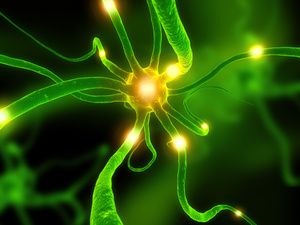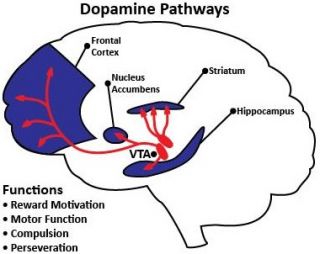Autism
Neuroscientists Identify New Brain Pathways Linked to Autism
Autism might be linked to abnormal synaptic transmissions of GABA and dopamine.
Posted May 29, 2014

In a groundbreaking study, a New York University Langone research team believes they have honed in on the brain pathways of a genetically determined repetitive motor behavior that is linked to autism.
The international team of neuroscientists at Langone has identified a genetic mutation that throws off the delicate balance of dopamine and GABA synaptic transmissions and may be linked to autism spectrum disorder (ASD).
The NYU team stumbled on this suspect genetic mutation after they knocked out the production of a protein called CNTNAP4 and then noticed that mice without this protein obsessively styled tufts of hair between their ears into mohawks. The CNTNAP4 protein has been identified as a marker for people with a history of autism in previous studies.
The study, titled “Cntnap4 Differentially Contributes to GABAergic and Dopaminergic Synaptic Transmission” was published May 25 in the online journal Nature and was lead by Gordon Fishell, PhD, professor of neuroscience and physiology at NYU Langone.
CNTNAP4, GABA, and Dopaminergic Transmissions Are Intertwined
The researchers found that knocking out CNTNAP4 dramatically affected the production of the neurotransmitters GABA (gamma-aminobutyric acid) and dopamine. GABA is the primary inhibitory neurotransmitter of the brain. GABA helps control erratic brain impulses and also helps to regulate muscle tone.
Dopamine is often referred to as the “reward molecule” and is linked with triggering the pleasure centers of the nucleus accumbens. The loss of CNTNAP4 augmented the release of too much dopamine in the nucleus accumbens, which can result in repetitive and obsessive behaviors.

Mohawk coiffed CNTNAP4 "knockout" mouse.
The researchers said they knew immediately that something was abnormal with the test mice when they observed them obsessively overgrooming tufts of hair between their ears into mini-mohawks. In previous experiments repetitive motor behaviors in mice have been linked to brain conditions that prevent children from developing normal social, behavioral, cognitive, and motor skills.
The Langone neuroscientists point out that people with autism often have a tendency to engage in repetitive movements, such as incessant hand-flapping, or rocking. Although, it is typical for mice to groom one another’s hair, almost all the mice with the knocked out CNTNAP4 protein “overstylized” hair with a center hairline made into a mohawk between their ears and hardly a tuft anywhere else.
Lack of CNTNAP4 Reduces GABA but Increases Dopamine Production

Among the researchers' key findings was that mice with reduced CNTNAP4 production had depressed GABA signaling which created a chain reaction which led to a hyper-production of dopamine.
In a press release, Dr. Fishell said: "Our study tells us that to design better tools for treating a disease like autism, you have to get to the underlying genetic roots of its dysfunctional behaviors, whether it is overgrooming in mice or repetitive motor behaviors in humans. There have been many candidate genes implicated in contributing to autism, but animal and human studies to identify their action have so far not led to any therapies. Our research suggests that reversing the disease's effects in signaling pathways like GABA and dopamine are potential treatment options."
Conclusion: Could This Research Lead to New Treatment Options for ASD?
One of the most exciting aspects of this new discovery is that Dr. Fishell believes that with some additional testing in humans these findings could potentially lead to new treatments for some people with autism. If the GABAergic and Dopaminerigic pathways' effects are found to be reversible in mice, there is a possibility that these symptoms could be reversed with pharmaceuticals in humans, too.
Dr. Fishell and his team plan to continue researching exactly how GABA and dopamine production changes as brain cells mature, and precisely what cellular mechanisms are involved in autism. Their goal is to control and rebalance biological systems that go awry in ASD and to develop new therapies for treating autism spectrum disorders.
If you’d like to read more on this topic, check out my Psychology Today blog posts:
- “How Is the Cerebellum Linked to Autism Spectrum Disorders?”
- "Autism Genes Can Disrupt Connectivity Between Brain Regions"
- "Can Oxytocin Improve Brain Function in Children With Autism?"
- "Research Links Autism Severity With Motor Skill Deficincies"
- "Targeting GABA Neurons Offers Clues for Boosting Resilience"
- "How Does the Vagus Nerve Convey Gut Instincts to the Brain?"
Follow me on Twitter @ckbergland for updates on The Athlete’s Way blog posts.




